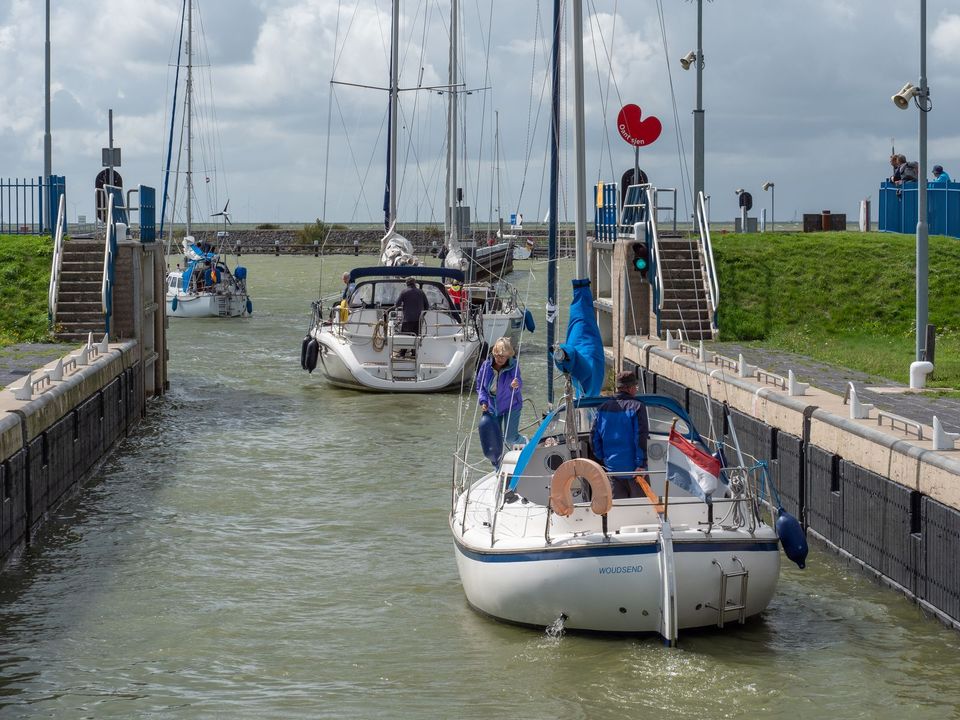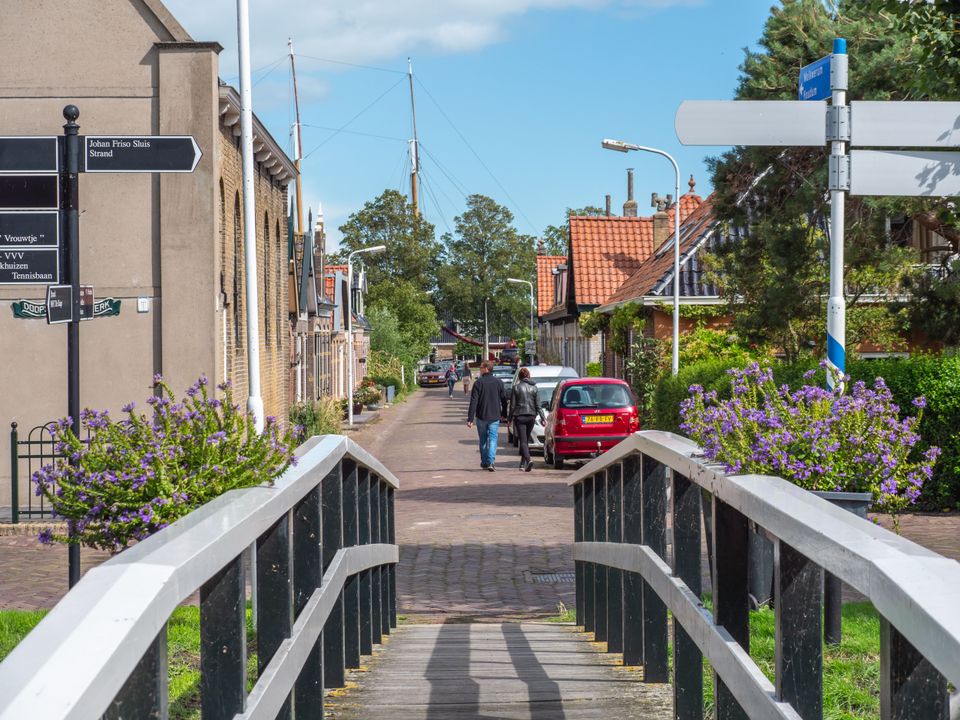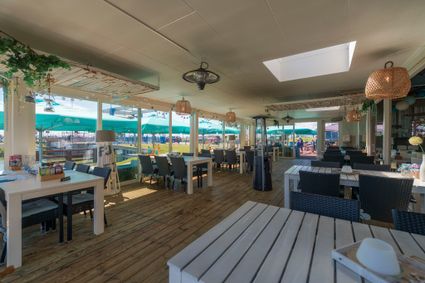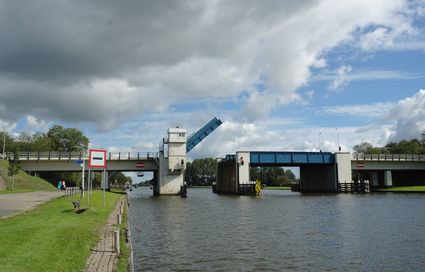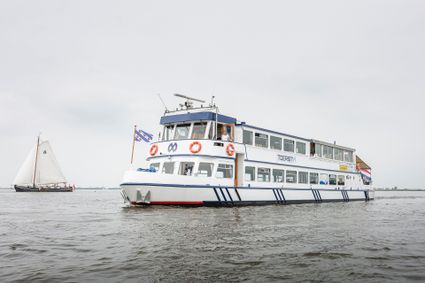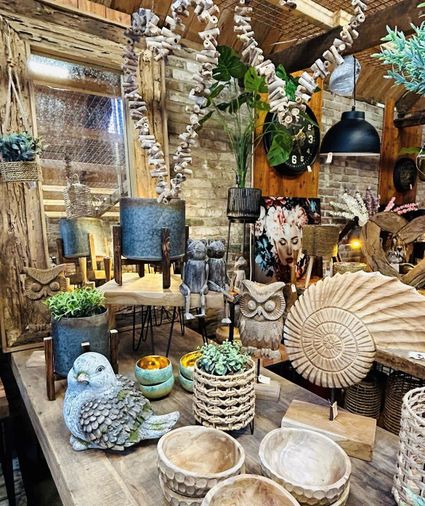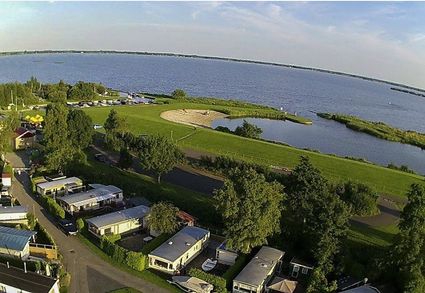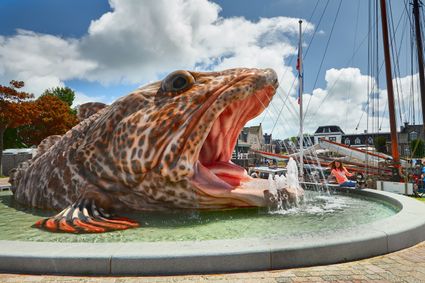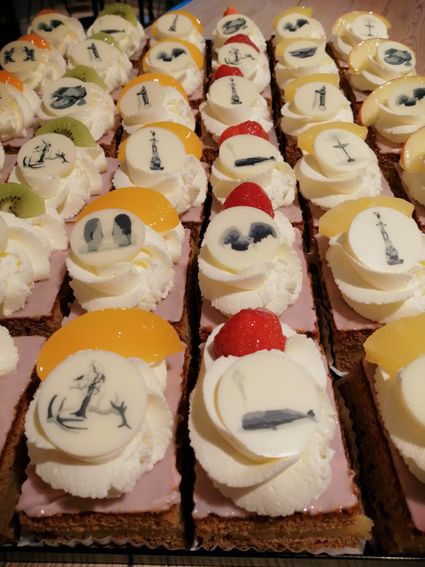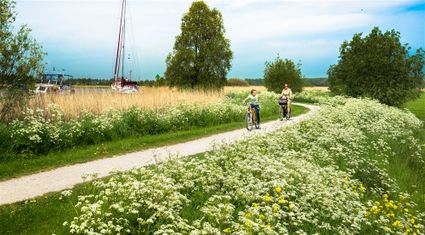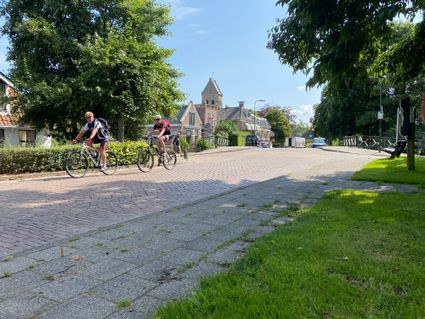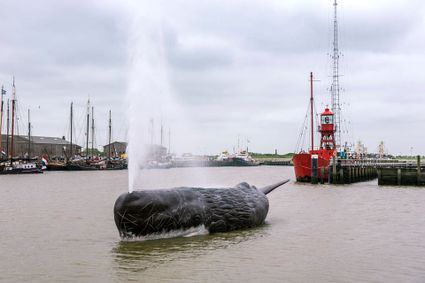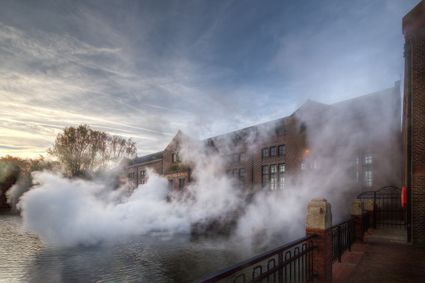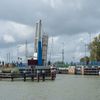Johan Friso locks
Stavoren
The locks and bridge built in 1966 connect the IJsselmeer lake and the Johan Friso canal.
Take a look
The locks and bridge built in 1966 connect the IJsselmeer lake and the Johan Friso canal. Over the years, the wait had been increasing up to two hours at times, and the capacity has therefore since been increased. King Willem-Alexander opened the second lock alongside the original lock on 8 May 2014. This new lock chamber is no less than 65 m long, and has all kinds of innovative features.
Floating jetties
While in the locks, boats are moored to jetties using ropes. In this lock chamber, the jetties actually float. They therefore rise up along with the water in the locks, and drop down again as the level falls. This avoids boats becoming ‘strung up’. The jetties are also used by the lock stewards. During busy summer months when many boats need to use the locks, they man the jetties to help with the mooring process.
Energy-neutral
No less than 150 solar panels have been fitted to the roof of the control building and the carport. Between them, they generate a mighty 32,000 kilowatt hours of electricity. This locks complex is therefore completely energy-neutral. The new chamber only has one door, unlike the standard two doors in most locks. A single door simply takes less energy to open. Moreover, one lock door is easier to maintain than two.
Bend in the chamber
The chamber is not straight, but rather has a slight bend in it. This was created on purpose, in order to make the locks feel more spacious. It gives a sense of safety to anybody sailing into the chamber. The tendency is also to move through further into the chamber past the bend, allowing more boats to fit in. In turn, this reduces the waiting times for other boats to use the locks.
J.L. Hoogland pumping station
Only a stone’s throw from the Johan Friso locks, you’ll see a pumping station which is very important to Friesland: the J.L. Hoogland pumping station. This 1966 building with its concave roof was designed by architect Piet de Vries. At a capacity of more than 7300 m² per minute, this pumping station pumps water from the Frisian waters into the IJsselmeer lake, keeping Frisian people’s feet well and truly dry. On its construction in 1966, the Hoogland pumping station took over this task from the UNESCO World Heritage Ir. D.F. Wouda pumping station in Lemmer. A fully functioning steam-powered pumping station, the latter is now only operated in case of extremely high water levels.
Here you will find Johan Friso locks
Johan FrisosluisStadsfenne 27
8715 JM Stavoren Plan your route
from your location

